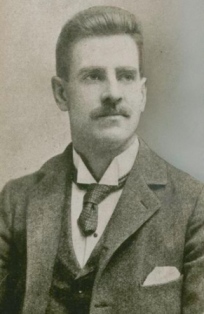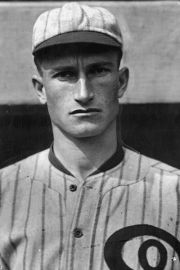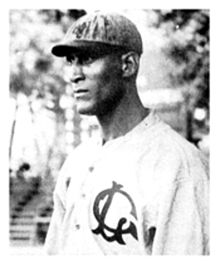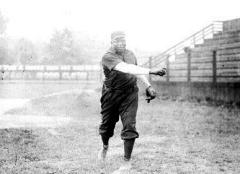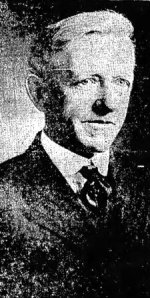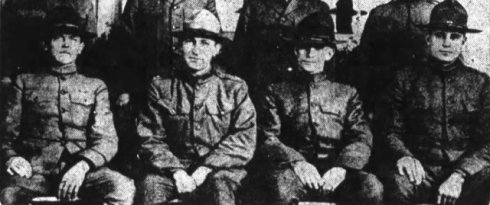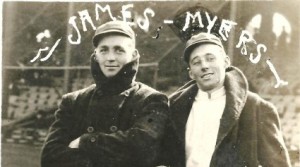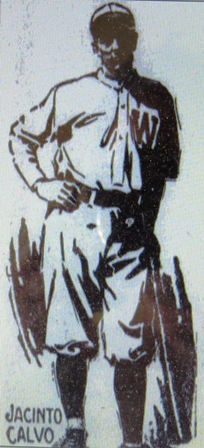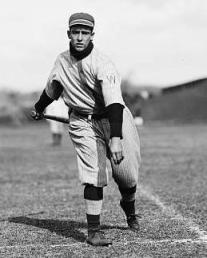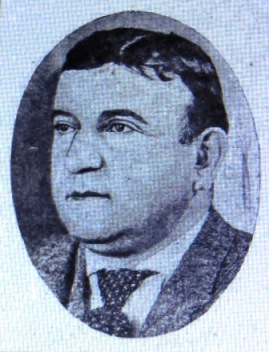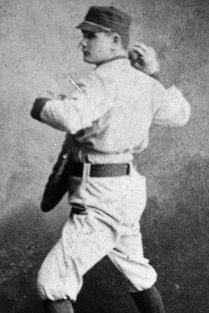Umpiring “Revolutionized”
The Chicago Inter Ocean reported that an “innovation in baseball” would be introduced during the second game of a September 9 double header at Chicago’s South Side Park between the White Sox and the Boston Americans.
“The astonishing feat, an apparent impossibility, will be accomplished by the use of colors, and the inventor, George W. Hancock, expects the umpiring business to be almost revolutionized.”
Hancock was the inventor of indoor baseball in 1887; the game that evolved into softball.
“(Umpire) Jack Sheridan will wear a red sleeve on his right arm and a white one on his left claw. For a strike he will wave the right arm, and for a ball the left one and the flash of the colors can be seen by people seated so far away that the voice even of Sheridan, the human bullfrog, would be inaudible.”
The “innovation” would likely have benefited one player, the popular center fielder of the White Sox, William Ellsworth “Dummy” Hoy, who was deaf. But no mention was made of Hoy in the description of Hancock’s plan.
The “astonishing feat” turned out to be so insignificant that The Inter Ocean failed to even mention it in the summary of the double-header which the Sox swept. Hoy did not appear in either game. George W. Hancock’s plan was never mentioned again.
Luminous Ball
Another innovation that promised to revolutionize the game that never came to be was the luminous ball. The Reading Times reported on the process in 1885:
“Charles Shelton, the leading druggist of Bridgeport, has discovered a compound which, when applied to a baseball, renders that object luminous. One of the drawbacks of playing baseball at night under the electric light is the inability to see the ball when thrown or batted into the air with the black night background of sky behind it. By saturating it with Mr. Shelton’s compound the ball while in motion is luminous. At rest it does not retain any light. The illuminating ball retains its meteoric irritation for 45 minutes.”
There is no record of Mr. Shelton’s invention ever being used in a professional game.
What’s a Dog Worth?
As part of the Federal League’s antitrust lawsuit against the American and National League’s affidavits were submitted from players detailing how organized baseball controlled the destiny and salary of player. Mordecai “Three Finger” Brown, who jumped from the Cincinnati Reds to sign with the Federal League’s St. Louis Terriers, swore in his filing that players, on at least two occasions, had been traded for dogs.
William A. Phelon, of The Cincinnati Times-Star and “Baseball Magazine,” said:
“This thing of trading dogs for ball players—as outlined in the Federal affidavits—should be put upon a sane and sensible basis.”
Phelon provided a “definite standard and a set of unit values” for baseball to follow:
McMullin’s Long Route to the Plate
Before Fred McMullin became the least famous of the eight members of 1919 Chicago White Sox who were banned from organized ball for life, he was a popular player on the West Coast.
The (Portland) Oregonian told a story that was purported to have taken place when McMullin was a member of the Tacoma Tigers in the Northwestern League in a game with the Seattle Giants:
“He came in from third on a dead run and made a slide for the plate. McMullin knew he didn’t touch it, but he was afraid to slide back, as the catcher had the ball in his hand. The umpire also knew he didn’t score, but he said nothing, for that was none of his business.
“Fred dusted off his uniform and stalked nonchalantly to the bench. A couple of Seattle players yelled for a decision.
“‘He wasn’t safe, was he?’ demanded (Walt) Cadman, who was catching for Seattle.
“The umpire shook his head no. At that Cadman, holding the ball in his hand, dashed over to the Tacoma bench to tag McMullin. Fred waited until he almost reached him and then slid to the other end of the bench.
“Cadman followed him, and as he did s slipped in some mud and fell to his knees. McMullin leaped up from the bench, dashed for the plate and touched it. The umpire called him safe.”

